
It is perhaps a little surprising to find out that J.R.R. Tolkien took a critical view of book illustration, given his own affinity for the art. But when we consider the minimalist covers he designed for his seminal fantasy trilogy, The Lord of the Rings, we see that they lean heavily on the symbolic, and do not depict any of novels’ characters. Of the usual run of illustrations for fantasy stories, Tolkien had this to say in a 1947 essay:
However good in themselves, illustrations do little good to fairy-stories. The radical distinction between all art (including drama) that offers a visible presentation and true literature is that… literature works from mind to mind and is thus more progenitive. It is at once more universal and more poignantly particular.
Of the many covers and illustrations of The Hobbit and the trilogy to appear in Tolkien’s lifetime, he had various opinions, from the highly favorable to the decidedly negative. In the latter category, we must place Barbara Remington’s weird covers from 1965-66 for the first U.S. paperback editions of Tolkien’s beloved books.
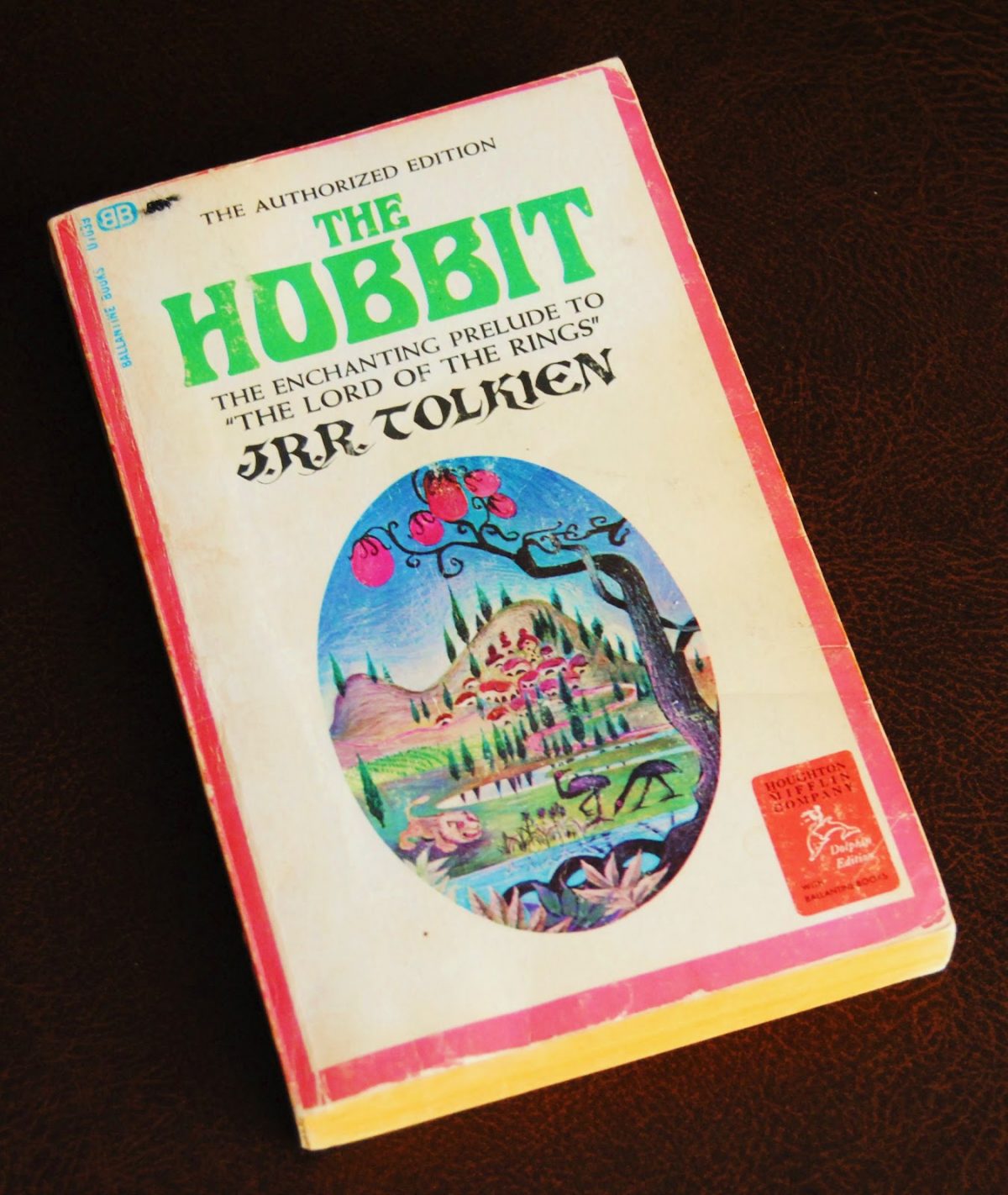
Remington’s first cover is truly an exercise in interpreting the idea of The Hobbit, rather than its content, since she was not given a chance to read the book when she received the commission. Ballantine, she remembered in a later interview, wanted to rush the books to print to beat an unauthorized edition from Ace books. “I tried to get a copy through my friends,” she said. “I tried finding people that had read them, but the books were not readily available in the states, so I had sketchy information at best.”
The illustrations were understandably met with bewilderment.
“I must ask about the vignette,” Tolkien wrote his publisher, “what has it got to do with the story? Where is this place? Why a lion and emus? And what is the thing in the foreground with pink bulbs? I do not understand how anybody who had read the tale (I hope you are one) could think such a picture would please the author.” The image was supposed to depict Hobbiton, a landscape very much inspired by the tranquil English countryside.
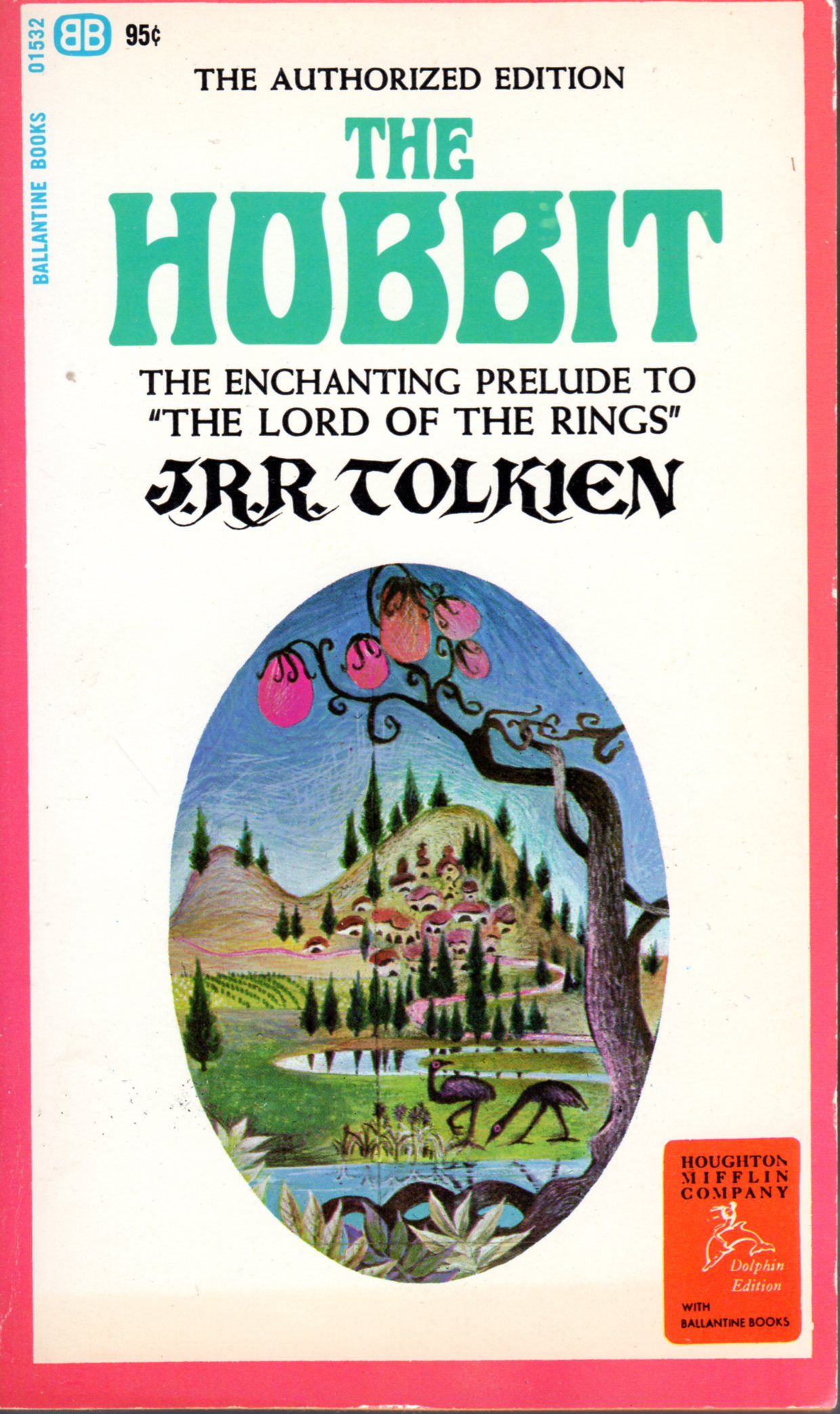
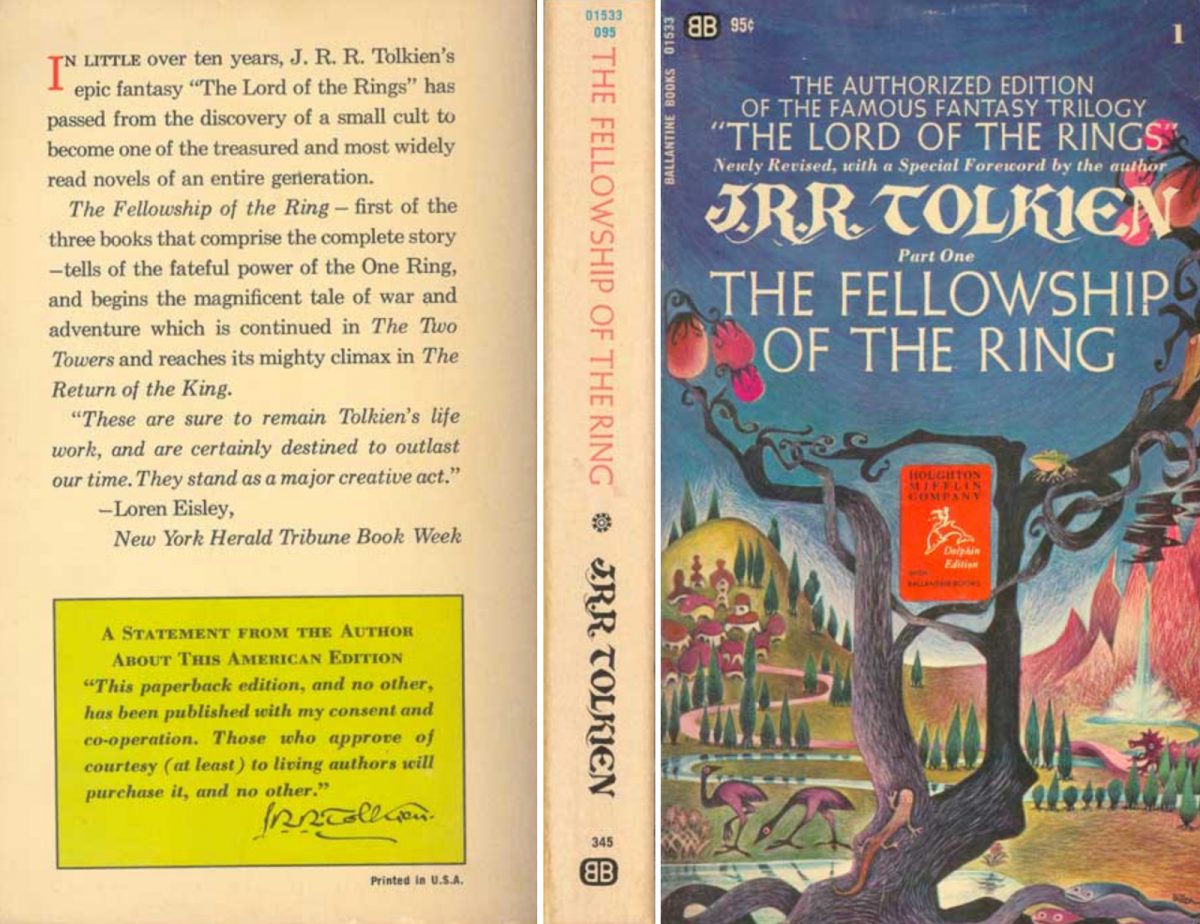
Tolkien was “especially perplexed by the lion,” Remington remembered. “He requested that Ballantine remove the lions from the cover, so they painted them over for later books.” The emus remained. Even after incurring Tolkien’s displeasure, which was admittedly mild (“I suppose that you are better judges of what is attractive in the USA than I am,” he wrote), Remington was asked to design covers for all three of The Lord of the Rings books.
These books she had not read either, and the emus reappeared, along with creatures that variously resemble a Pegasus, Cerberus the hell hound, and the Hydra. “Nobody was aware of … the magnitude of these books, or the impact they would have,” Remington said. “I’ve done many fantasy covers, and always read the books first… If I’d had the time to actually read the books first, which was my habit to do, I’d have definitely drawn different pictures.”
I’m a big Tolkien fan, and love these books, having read them many times… After reading his work, I was in awe of Tolkien. I knew there was something special about him. If I [had] read The Lord of the Rings first, I don’t think I could have drawn the cover art… I’d have felt intimidated. These books were so special, I would have perhaps felt overwhelmed.
Despite her later misgivings, “the buying public,” writes J.P. Trostle, “embraced the dreamlike imagery, incongruence aside. It was one of several things that helped make The Lord of the Rings a perennial bestseller.” Remington, who passed away on January 23 at age 90, should be remembered for more than these rushed and silly cover Tolkien cover illustrations. Her obit tells a story of moving to “New York’s East Village” and “becoming a fixture among its burgeoning beatnik/hippie community, befriending such poets as Allen Ginsburg and personal mentor Lionel Ziprin,” and later “sketching many breakout personalities of the punk rock era.”
Born in St. Paul, Minnesota to a family of artists and activists, Remington was also a former boatbuilder, who helped restore and sail the Petrel, “a 70-foot yawl moored at the South Street Seaport.” Her illustrated books include Boat (see illustrations further down), The Christmas Mouse, Really Not Really, and The Billy Goats Gruff.
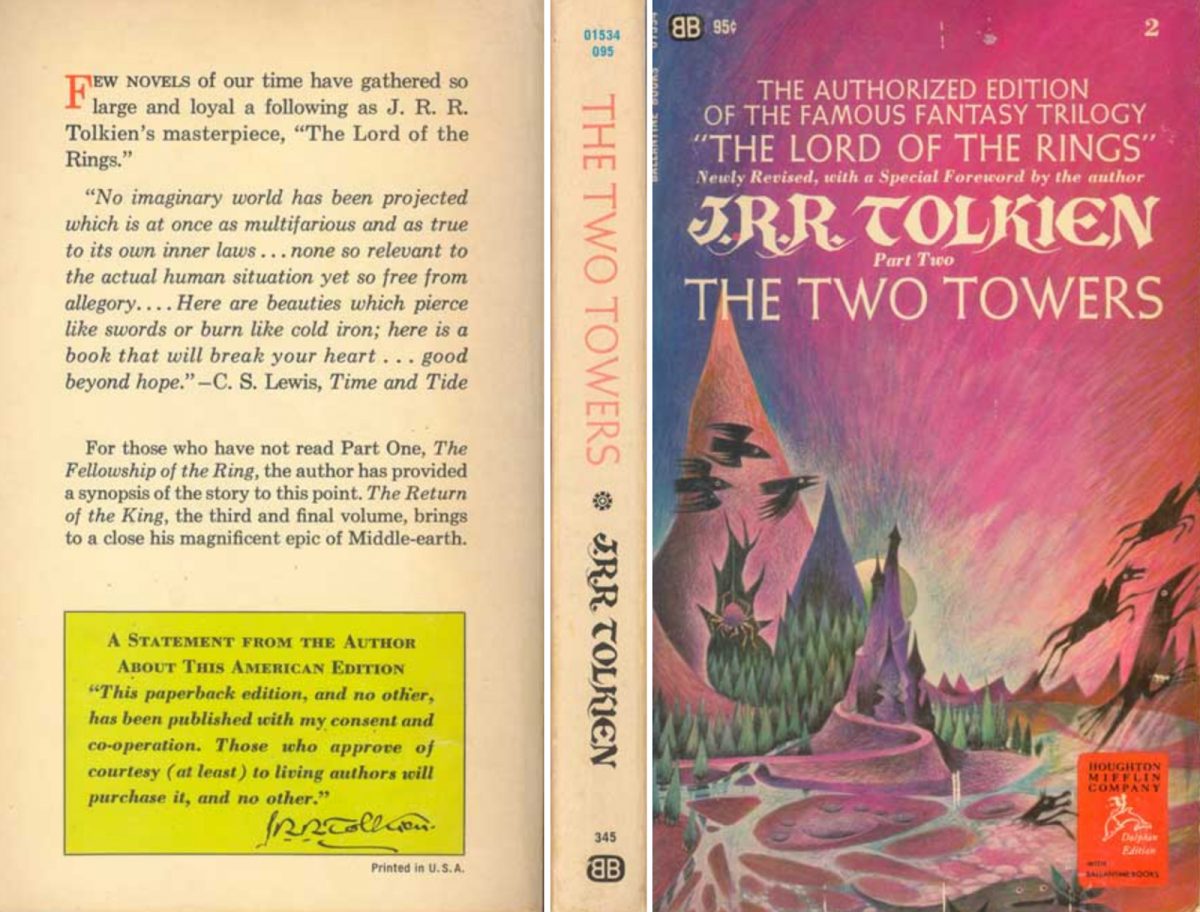
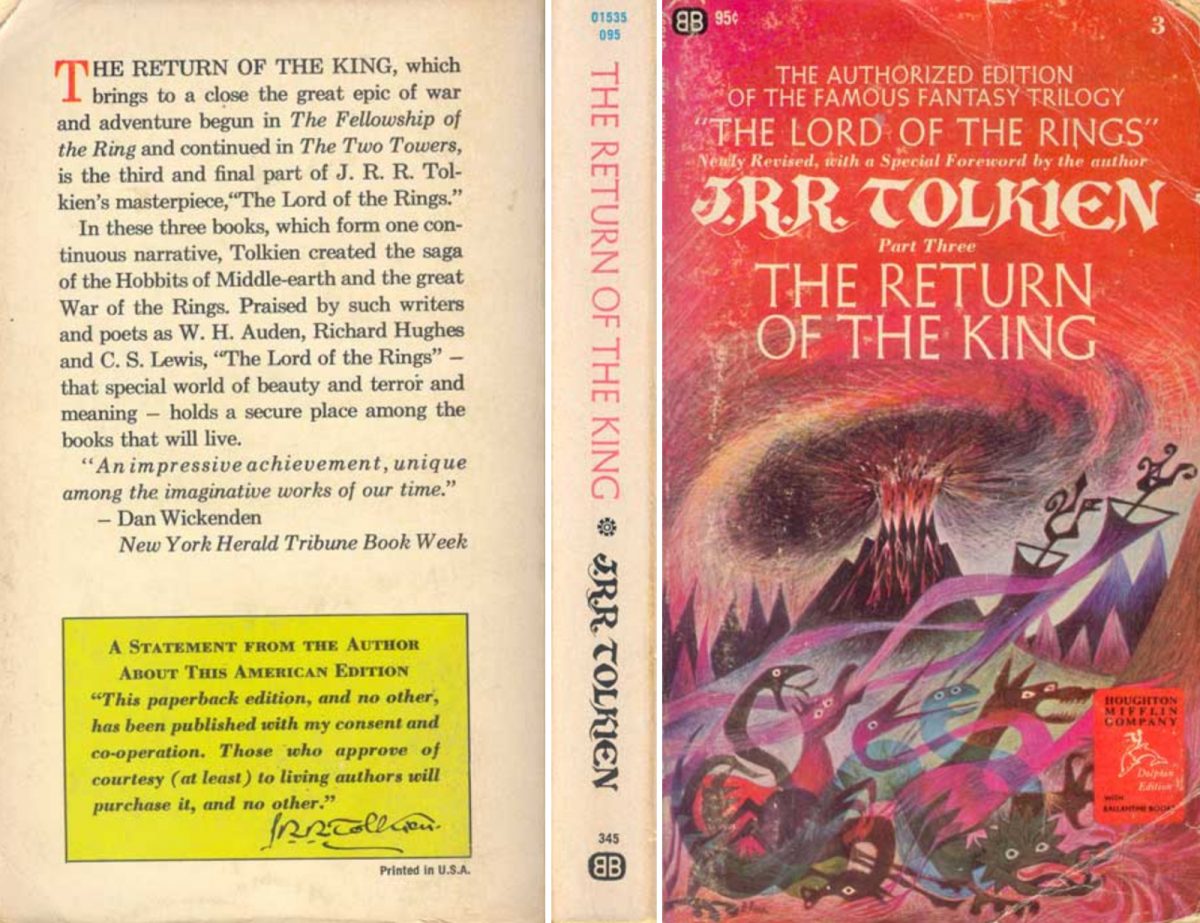
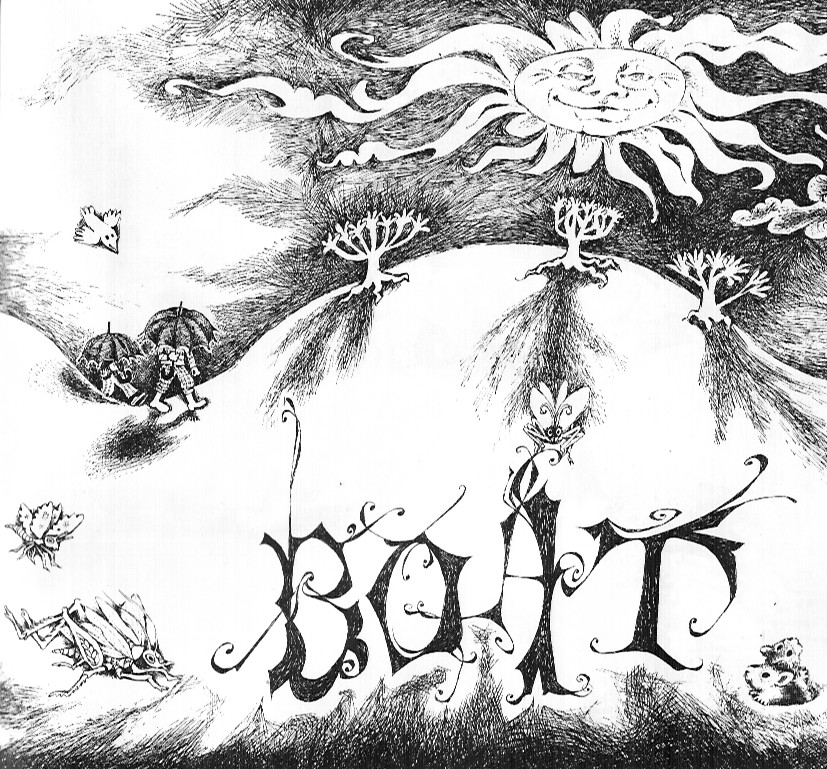

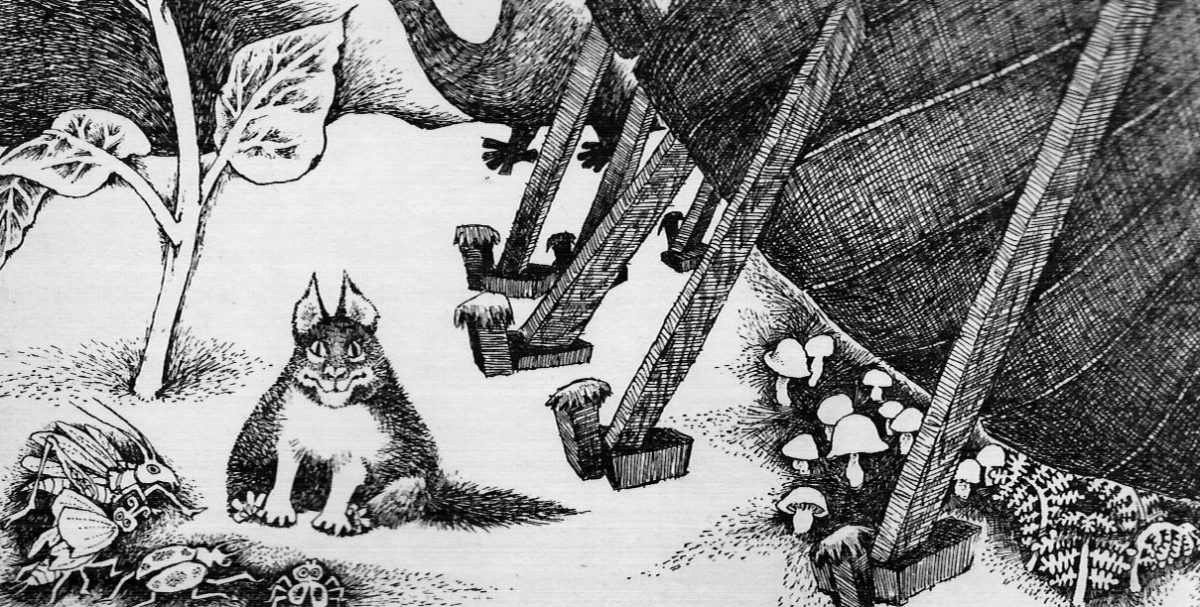
Would you like to support Flashbak?
Please consider making a donation to our site. We don't want to rely on ads to bring you the best of visual culture. You can also support us by signing up to our Mailing List. And you can also follow us on Facebook, Instagram and Twitter. For great art and culture delivered to your door, visit our shop.

